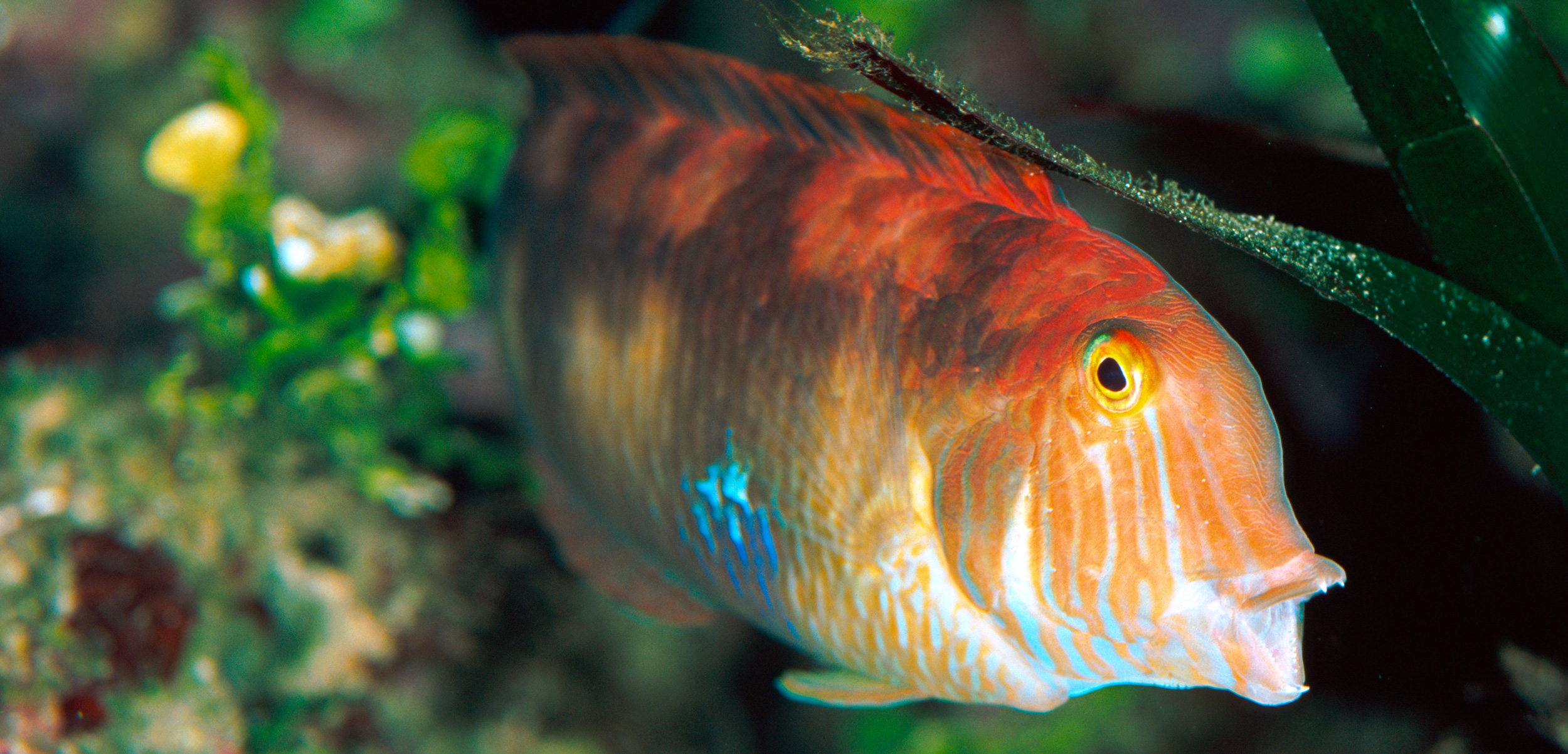As humans we tend to think of cannibalism as something horrifying and taboo. But in the fish world the reality is more complicated. Many species of fish do in fact eat other fish – even members of their own species. However, new research shows that this type of cannibalism is much less common than previously thought.
How Widespread is Cannibalism Among Fish Species?
Scientists have been studying cannibalism in fish for over a century. In the past, it was widely believed to be quite prevalent. A 1991 review stated that “Finding examples of cannibalism is not difficult, and it may be more interesting to look for taxa in which the behaviour does not take place.”
However, recent research challenges this notion. A comprehensive analysis of over 1,000 studies on fish cannibalism found confirmed cases in only around 1% of the 30,000 known fish species. While shocking examples certainly exist, cannibalism appears far from the norm for most fish.
Types of Cannibalism Seen in Fish
When fish cannibalism does occur, it primarily takes three forms:
-
Adults consuming juveniles – The most common scenario is larger, mature fish preying on smaller or younger ones of the same species. For example, older trout often eat fry from their own hatch.
-
Eggs and larvae – Some fish species will eat the eggs and larvae of their own kind. Female mouthbrooding tilapia are known to swallow their own dying eggs.
-
Aggressive adults – In some fish, adults will attack and consume smaller adults of the same species when competing for food or mates. Larger redtail catfish often cannibalize smaller ones sharing their habitat.
While gruesome, eating siblings or eggs enables a fish to eliminate competition and gain nutrition. However, most species appear to limit this behavior, likely because it reduces reproductive success.
Factors Promoting Cannibalism
Scientists have identified certain conditions that can lead to increased cannibalism among populations where it normally occurs:
-
Overcrowding – When too many fish are confined in a small area, it can spur cannibalism as they compete for limited resources. Aquaculture facilities must take care to avoid overcrowding.
-
Lack of prey – Populations deprived of adequate alternative prey are more likely to turn cannibalistic to survive. This is often seen in larvae and juveniles that cannot yet hunt other species.
-
Size disparity – Large size differences between adults make cannibalism more likely, as the larger fish can more easily consume smaller individuals Some species reduce size differences by slowing growth rates
-
Climate – Cannibalism seems more prevalent among fishes living in temperate areas compared to the tropics, possibly due to differences in habitat and species diversity.
While these factors can drive cannibalism, most fish appear to avoid eating their own whenever possible.
Is Cannibalism Always Bad?
For fish populations, cannibalism is a double-edged sword. On one hand, it can be devastating if adults wipe out vulnerable offspring. However, moderate juvenile cannibalism may help sustain groups through hard times and regulate population size. Some cannibalism can even benefit certain species by weeding out weaker individuals.
For example, researchers found that juvenile perch that consumed larvae showed faster growth and higher overwinter survival. While shocking, this cannibalism ultimately gave the population a better chance to rebound. The larvae would likely have died over winter anyway due to lack of food.
Thus, while gruesome, not all cannibalism is inherently harmful. As with many aspects of nature, the impacts depend heavily on complex context.
Cannibalism in Fish Video Games
The topic of fish eating other fish has captured public fascination – for proof, look no further than popular online fish games! One such game is Fish Eat Fish, where players control a fish trying to consume others while avoiding being eaten. The goal is to grow large and earn gems to rebuild the virtual reef environment.
By bringing the brutal reality of the fish world to vivid life, games like this satisfy human morbid curiosity about cannibalism in our finned friends. Of course, Few fish would choose to eat their own kind in the wild unless desperate. But these games let us experience this drama safely through our screens!
While shocking instances exist, recent evidence indicates that most fish species avoid cannibalism when possible. Factors like overcrowding and lack of prey can drive fish to this behavior, but it is not as ubiquitous as once believed.
Cannibalism in fish is neither universally good or bad – context matters greatly, and moderate rates may even benefit some populations. One thing is clear though: in the diverse fish world, few behaviors are black and white. Reality exists in complex shades of gray. The more we learn, the more we must adjust simplistic assumptions about what is “normal”.
So next time you visit a pond or aquarium, appreciate the many complex interactions playing out below the surface. The fish world is far more nuanced than many appreciate. Just because a behavior seems gruesome or shocking to us does not mean it defies all natural logic – nature follows her own ruthless reason, difficult as that may be for squeamish humans to accept!

Coastal science and societies

A new study of cannibalism in fishes shows the behavior is much less prevalent than scientists once thought.
Remember in Forrest Gump when Bubba is droning on about all the different ways you can prepare shrimp? Well, you could do a pretty good parody of that scene by reciting the myriad ways fishes engage in cannibalism.
Cannibalism, of course, refers to any instance of an animal consuming a member of its own species. You might think of adult fish fighting, but more often than not, a bigger fish is eating a smaller one.
When too many eggs of a female Egyptian mouth-brooder die, she just up and swallows the rest. A lot of fish eat their younger and less developed siblings, but Dorada larvae will go after and eat their older siblings. And male razorfish get close to females in what looks like an attempt to mate. But when the females lay eggs, the males eat them and run away.
Scientists have been studying cannibalism in fish for nearly as long as they’ve been studying fish, says Larissa Strictar Pereira, a biologist at Brazil’s Universidade Estadual de Maringá. And in general, the behavior has been considered rather common. According to a review published in 1991, “Finding examples of cannibalism is not difficult, and it may be more interesting to look for taxa in which the behaviour does not take place.”
But if all the cool fish are eating each other, why couldn’t Pereira find any proof of cannibalism in the upper Paraná River floodplain, which includes parts of Brazil, Paraguay, and Argentina and was the site of her research into river habitats? This made her look at all the papers that had already been written about fish cannibalism to see how common it really is.
In the end, Pereira and her coauthors thought they would find a lot more cases of cannibalism than they did. Even though the researchers looked at more than 1,000 papers that talked about the behavior in both freshwater and saltwater fish, they found that only about 1% of the world’s 30,000 known fish species have been seen to eat each other.
She says that her research led her to many interesting and scary things, like the fact that some parents will eat their children even when there is plenty of other food around. Her search also made her want to look into another theory that has been put forward in the literature: the idea that cannibalism might be linked to latitude.
When Pereira sat down with all her data, she found that fishes do actually get more bitey in the mouthy the farther north you go. The correlation was less strong for the southern hemisphere, though that might be because there’s significantly more ocean down south and generally fewer stark differences between habitats and the species they contain in these latitudes.
This fits with what other research has found: tropical fish seem to eat each other less than temperate fish. Pereira and her coauthors suggest that this is because tropical waters tend to contain more biodiversity. When there are lots of other fish in the sea, it makes sense that you should eat those instead of your own kind.
Stay tuned though, because Pereira is just getting started.
“I got a lot of information from this research, but I still have some questions,” she says. “My interest won’t go away if I don’t answer them.” ”.
Fish eat Fish | Comparison | 3D animation
What is the objective of Fish Eat Fish?
Fish Eat Fish is a game where you must eat other fish to survive. It can be played in single player, 2 player, and 3 player modes. Use the keyboard and mouse to battle it out to see who is the top fish.
How many players can play Fish Eat Fish?
Fish Eat Fish is a game where you must eat other fish to survive. It can be played in single player, 2 player, and 3 player modes. Use the keyboard and mouse to battle it out to see who is the top fish.
What other animals eat fish?
Examples of animals that eat fish include alligators, minks, eagles, tuna, storks, and tigers. Fish is a type of food that has been eaten by humans for centuries. The consumption of fish goes back to the Stone Age when people used them as an easy source of protein and fat.
What controls do the players use in ‘Fish Eat Fishes’?
This game can be played solo, in pairs, and in threes. Player 1 controls the yellow and purple Ivi . Buttons: WASD. Player 2 controls the orange and white Neo . Buttons: arrow keys. This fish looks like the main character of Finding Nemo. Player 3 controls the red and blue Tod.
